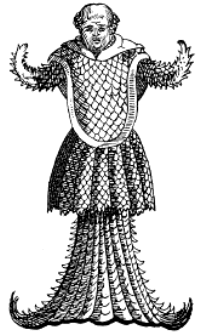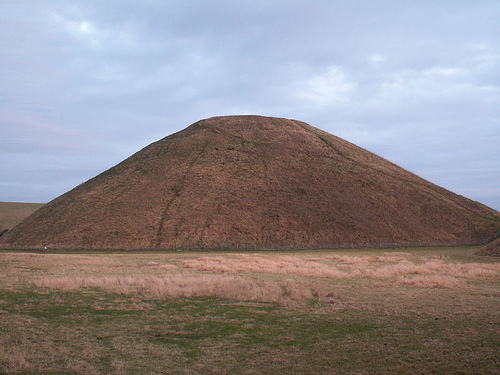On the Isle of Portland, in the English Channel, it’s considered bad luck to say the word rabbit.
So people use the term “underground mutton.”
On the Isle of Portland, in the English Channel, it’s considered bad luck to say the word rabbit.
So people use the term “underground mutton.”

The fishermen of Laguna in southern Brazil have a unique arrangement with local bottlenose dolphins. A pod of dolphins will drive fish toward the beach, where fishermen stand in the surf. When they see a dolphin roll over, the men throw out their nets, and the dolphins eat the escaping fish.
No one trained the dolphins to do this. It’s been going on since at least 1847.
If you’re going to make prophecies, it pays to be a little vague. The supporters of Ursula Southeil (1488-1561) claimed she’d correctly foreseen the automobile, the telegraph, air travel, and submarines. But one prediction failed to come true:
The world to an end shall come,
In eighteen hundred and eighty one.
“Old men and comets have been reverenced for the same reason,” wrote Jonathan Swift, “their long beards, and pretenses to foretell events.”

The pied piper is not just a fairy tale. Something specific and terrible appears to have happened in the German town of Hamelin on June 26, 1284. What it was is uncertain, but it seems to have claimed the town’s children, perhaps in a mass drowning, burial, epidemic or exodus. An inscription from 1603 reads:
Anno 1284 am dage Johannis et Pauli
war der 26. junii
Dorch einen piper mit allerlei farve bekledet
gewesen CXXX kinder verledet binnen Hamelen gebo[re]n
to calvarie bi den koppen verloren
In the year of 1284, on John’s and Paul’s day
was the 26th of June
By a piper, dressed in all kinds of colors,
130 children born in Hamelin were seduced
and lost at the place of execution near the Koppen.
Rats weren’t added to the story until the late 16th century. The site of the children’s disappearance, on Coppenbrugge mountain, is now a site of pagan worship, and a law forbids singing and music in one street of Hamelin, out of respect for the victims … though we may never know what their fate was.
It’s estimated that, in the United States alone, businesses lose $800 million to $900 million each Friday the 13th because some people will not travel or go to work.

In his Annales, English antiquarian John Stow describes the capture of a sea monster in the shape of a man, in 1187:
“Neere unto Orforde in Suffolke, certaine Fishers of the sea tooke in their nettes a Fish having the shape of a man in all pointes, which Fish was kept by Barlemew de Glanville, Custos of the castle of Orforde, in the same castle, by the space of six monthes, and more, for a wonder: He spake not a word. All manner of meates he gladly did eate, but more greedilie raw fishe, after he had crushed out all the moisture. Oftentimes he was brought to the Church where he showed no tokens of adoration. At length, when he was not well looked to, he stale away to the sea and never after appeared.”
The creature was not fish-tailed, but had a bald head, the body of a man, a beard and a very hairy chest. What was it really? A giant squid? A walrus? An angel shark? We’ll never know.
A 12th-century Javanese king, Jayabaya, predicted that white men would conquer the Indonesian island one day and tyrannize the people for years, until the white men were driven out by yellow men from the north. The yellow men would remain for one crop cycle, he said, and then Java would be free.
Amazingly, these predictions were fulfilled almost perfectly 800 years later. White settlers from the Netherlands ruled the island until the Japanese invaded in 1942, and two years later they officially granted Indonesia its independence.
Since Javanese predictions are so accurate, we should note that Indonesia seems due for another messiah — prophecies said he’d arrive “when iron wagons drive without horses and ships sail through the sky.”

In 1971, the Flat Earth Society announced that the world is a disc, with the North Pole at the center and a 50-meter wall of ice at the outer edge.
Strangely, that matches the flag of the United Nations.
Sam Patch (1799-1829), “The Yankee Leaper,” earned his epithet — in his 30-year lifetime he jumped from the following points:
That last one attracted a crowd of 8,000 — Upper Falls is 99 feet high. The first attempt went fine, but on the followup he dislocated both shoulders and drowned. His grave marker says “Sam Patch — Such Is Fame.”

As old as the pyramids, southern England’s Silbury Hill is even more enigmatic. It’s essentially a gigantic man-made hill, 130 feet tall and perfectly round.
It must have taken 18 million man-hours to build, but archaeologists are stumped as to its purpose.